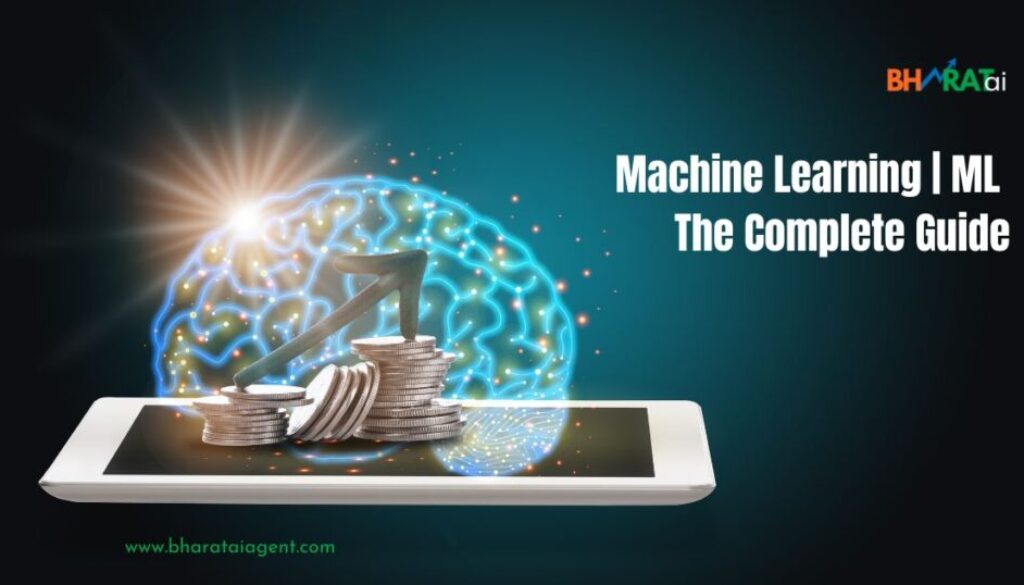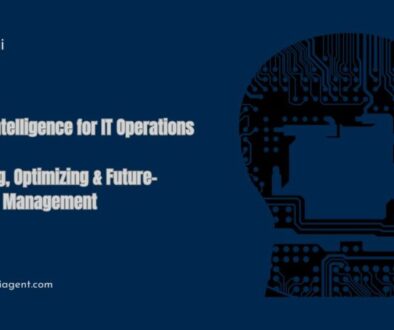Machine Learning (ML) : A Complete, Authoritative Guide for 2025
Introduction
Machine Learning (ML) has rapidly evolved to become one of the most powerful and pervasive technologies of our era. ML powers everything from personalized recommendations on your favorite apps to advanced healthcare diagnostics, financial market predictions, and autonomous vehicles.
In this comprehensive guide, you’ll explore what machine learning is, the types of ML, recent breakthroughs as of 2025, real-world applications, benefits, challenges, and the future landscape. We’ll also answer common questions directly and clearly, ensuring a complete understanding of ML’s current state and future potential.
Here’s what you will learn in this guide:
-
What exactly is Machine Learning ?
-
Types of Machine Learning (with latest examples).
-
Major ML developments & breakthroughs .
-
Practical, real-world ML applications across industries.
-
Benefits and challenges of using ML today.
-
Future trends in Machine Learning.
-
Common FAQs about ML, answered clearly and directly.
What is Machine Learning (ML) ?
Machine Learning is a subset of Artificial Intelligence (AI) that focuses on algorithms allowing computer systems to learn from data, recognize patterns, and make intelligent decisions with minimal human intervention. As of 2025, ML algorithms have become exceptionally sophisticated, efficient, and widely accessible, fueling innovation across nearly all sectors.
Types of Machine Learning
Machine Learning today is broadly categorized into four main types:
1. Supervised Learning
-
Algorithms trained with labeled data.
-
Used extensively in predictive analytics, image classification, and natural language processing (NLP).
-
Examples (2025): Real-time fraud detection, advanced medical image diagnostics, customer churn prediction models.
2. Unsupervised Learning
-
Algorithms identify hidden patterns in unlabeled data.
-
Powerful for clustering, anomaly detection, and recommendation systems.
-
Examples (2025): Customer segmentation, anomaly detection in cybersecurity, dynamic content recommendations.
3. Reinforcement Learning
-
Algorithms learn via rewards and penalties based on interactions with an environment.
-
Prominent in gaming, robotics, and autonomous systems.
-
Examples (2025): Tesla’s Autopilot systems, autonomous drones, real-time decision-making systems in supply chains.
4. Generative AI and Deep Learning
-
ML models generating new, original content from learned data.
-
Deep learning uses neural networks with multiple layers to handle complex tasks.
-
Examples (2025): GPT-4 Turbo content generation, AI-generated visual art (DALL-E 3), generative videos (Midjourney Video).
Key ML Breakthroughs as of 2025
Recent ML innovations are reshaping the digital landscape:
-
Advanced Multimodal AI Models: Combining text, image, audio, and video inputs simultaneously (e.g., OpenAI’s GPT-4 Turbo Multimodal released in late 2024).
-
Edge ML Computing: Algorithms running locally on devices, enhancing privacy and speed (smartphones, IoT devices, and autonomous vehicles).
-
AI Explainability (XAI): Models providing clear explanations about decision-making processes, supporting ethical compliance and transparency.
-
Quantum Machine Learning: Early integration of quantum computing and ML, significantly enhancing computational capabilities and problem-solving speed.
-
Autonomous System Optimization: Reinforcement learning deployment across autonomous cars, drones, and robots achieving new performance levels.
Real-World Applications of Machine Learning in 2025
Machine Learning currently drives innovation in diverse fields:
✅ Healthcare
-
Predictive diagnostics and personalized medicine.
-
AI-driven imaging analytics and early disease detection.
✅ Finance
-
Intelligent trading systems and personalized financial advisory.
-
Advanced fraud detection and prevention mechanisms.
✅ Transportation
-
Autonomous vehicles and drone navigation.
-
AI-based route optimization and predictive maintenance.
✅ Marketing
-
Hyper-personalized marketing and advertising campaigns.
-
Customer segmentation and advanced consumer insights.
✅ Retail and E-commerce
-
AI-driven recommendation engines.
-
Demand forecasting, inventory optimization, and price automation.
✅ Cybersecurity
-
ML-driven threat detection, risk management, and proactive defense systems.
Benefits of Machine Learning
Machine Learning adoption brings businesses significant advantages:
-
Improved Decision-Making: Actionable insights from vast datasets.
-
Enhanced Customer Experience: Real-time personalization.
-
Increased Efficiency: Automation of routine and complex tasks.
-
Cost Reduction: Optimized resources, predictive maintenance.
-
Innovation and Competitiveness: Rapid development of new products and services.
Challenges and Ethical Concerns with ML
Despite immense potential, ML presents several challenges:
-
Data Privacy & Security: Responsible management of sensitive data.
-
Bias and Fairness: Ensuring unbiased, fair outcomes across user groups.
-
Interpretability & Explainability: Transparent, understandable ML decisions.
-
Regulatory Compliance: Adhering to evolving international guidelines.
Future Trends of Machine Learning
Future advancements expected in ML:
-
Broader adoption of Quantum ML: Accelerating computing power and data analysis capabilities.
-
ML-driven Augmented Reality (AR): Real-time immersive experiences.
-
Automated ML (AutoML) Integration: Simplified, rapid deployment of ML models without coding skills.
-
Rise of Synthetic Data: Increased usage of AI-generated datasets for secure and privacy-compliant ML model training.
-
Next-generation Autonomous Systems: Smarter, safer, and more widespread usage across sectors.
FAQs: Machine Learning (ML)
Q1: What exactly is machine learning in simple terms?
Machine Learning is teaching computers to learn from data without explicit programming, enabling them to make accurate predictions and informed decisions autonomously.
Q2: How is machine learning different from AI?
-
AI: Broader field focused on creating intelligent machines.
-
ML: Subset of AI involving algorithms that learn from data to make predictions.
Q3: Can small businesses benefit from machine learning in 2025?
Absolutely! ML is accessible and affordable, enabling small businesses to automate processes, gain customer insights, and enhance competitive positioning.
Q4: Is machine learning reliable and safe today?
ML is highly reliable when implemented responsibly, transparently, and ethically. It requires ongoing oversight and regular optimization.
Q5: How is ML changing job roles in 2025?
ML automates routine tasks, allowing humans to focus more on strategic, creative, and oversight roles. It also creates new specialized job opportunities.
Conclusion
Machine Learning in 2025 is at the heart of technological innovation, profoundly impacting society, businesses, and daily life. Understanding ML thoroughly—its applications, benefits, and implications—enables individuals and organizations to leverage this powerful technology responsibly and effectively. Now is the ideal time to embrace ML’s potential and drive meaningful progress.
#MachineLearning #ML2025 #DeepLearning #QuantumML #ArtificialIntelligence #AIApplications #DataScience #FutureTech #ExplainableAI #EdgeML #AIInnovation #TechTrends2025
Ready to explore Machine Learning for your business or career in 2025?
Machine Learning 2025
ML Types and Examples
Recent ML Innovations
ML Practical Applications
Benefits of Machine Learning
Machine Learning Ethical Concerns
Future Machine Learning Trends
Quantum Machine Learning
Edge Computing ML
Explainable ML (XAI)
What is Machine Learning?
ML Industry Trends 2025
Machine Learning Applications Examples
Difference between AI and ML
ML Implementation Strategies
Ethical Considerations in ML
ML in Healthcare and Finance
ML impact on jobs
Future of ML technology
Quantum computing in ML




